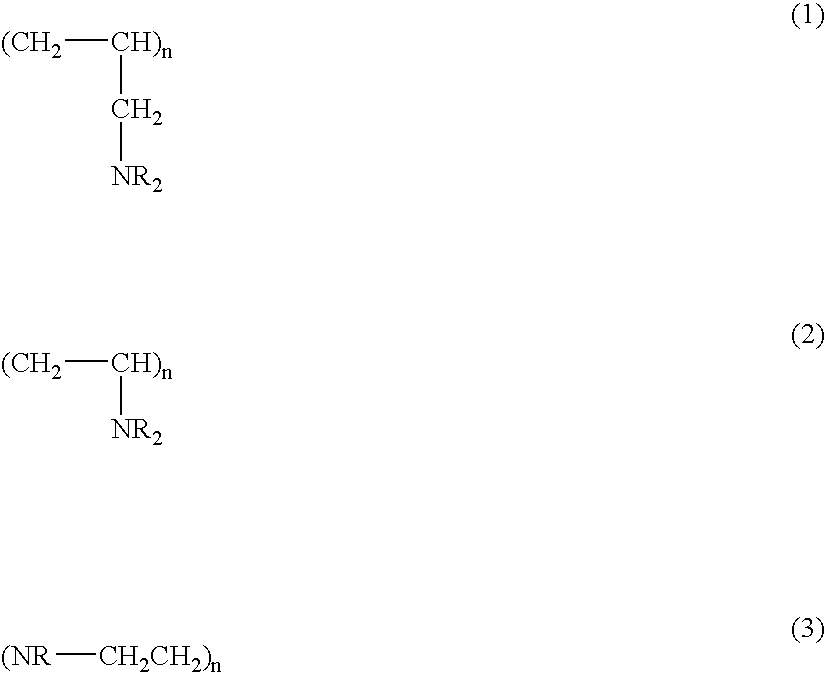Process for removing bile salts from a patient and alkylated compositions therefor
a technology of bile salts and alkylated compositions, which is applied in the field of removing bile salts from patients, can solve the problems of unpalatable resin, unsatisfactory sequestrants, and unsatisfactory sequestrants, and achieves non-toxic, effective treatment, and reduces the patient's cholesterol level.
- Summary
- Abstract
- Description
- Claims
- Application Information
AI Technical Summary
Benefits of technology
Problems solved by technology
Method used
Image
Examples
examples
A. Polymer Preparation
1. Preparation of Poly(vinylamine)
[0045]The first step involved the preparation of ethylidenebisacetamide. Acetamide (118 g), acetaldehyde (44.06 g), copper acetate (0.2 g), and water (300 mL) were placed in a 1 L three neck flask fitted with condenser, thermometer, and mechanical stirred. Concentrated HCl (34 mL) was added and the mixture was heated to 45–50° C. with stirring for 24 hours. The water was then removed in vacuo to leave a thick sludge which formed crystals on cooling to 5° C. Acetone (200 ML) was added and stirred for a few minutes, after which the solid was filtered off and discarded. The acetone was cooled to 0° C. and solid was filtered off. This solid was rinsed in 500 mL acetone and air dried 18 hours to yield 31.5 g of ethylidenebis-acetamide.
[0046]The next step involved the preparation of vinylacetamide from ethylidenebisacetamide. Ethylidenebisacetamide (31.05 g), calcium carbonate (2 g) and celite 541 (2 g) were placed in a 500 mL three ...
PUM
| Property | Measurement | Unit |
|---|---|---|
| mol % | aaaaa | aaaaa |
| time | aaaaa | aaaaa |
| temperature | aaaaa | aaaaa |
Abstract
Description
Claims
Application Information
 Login to View More
Login to View More - R&D
- Intellectual Property
- Life Sciences
- Materials
- Tech Scout
- Unparalleled Data Quality
- Higher Quality Content
- 60% Fewer Hallucinations
Browse by: Latest US Patents, China's latest patents, Technical Efficacy Thesaurus, Application Domain, Technology Topic, Popular Technical Reports.
© 2025 PatSnap. All rights reserved.Legal|Privacy policy|Modern Slavery Act Transparency Statement|Sitemap|About US| Contact US: help@patsnap.com


